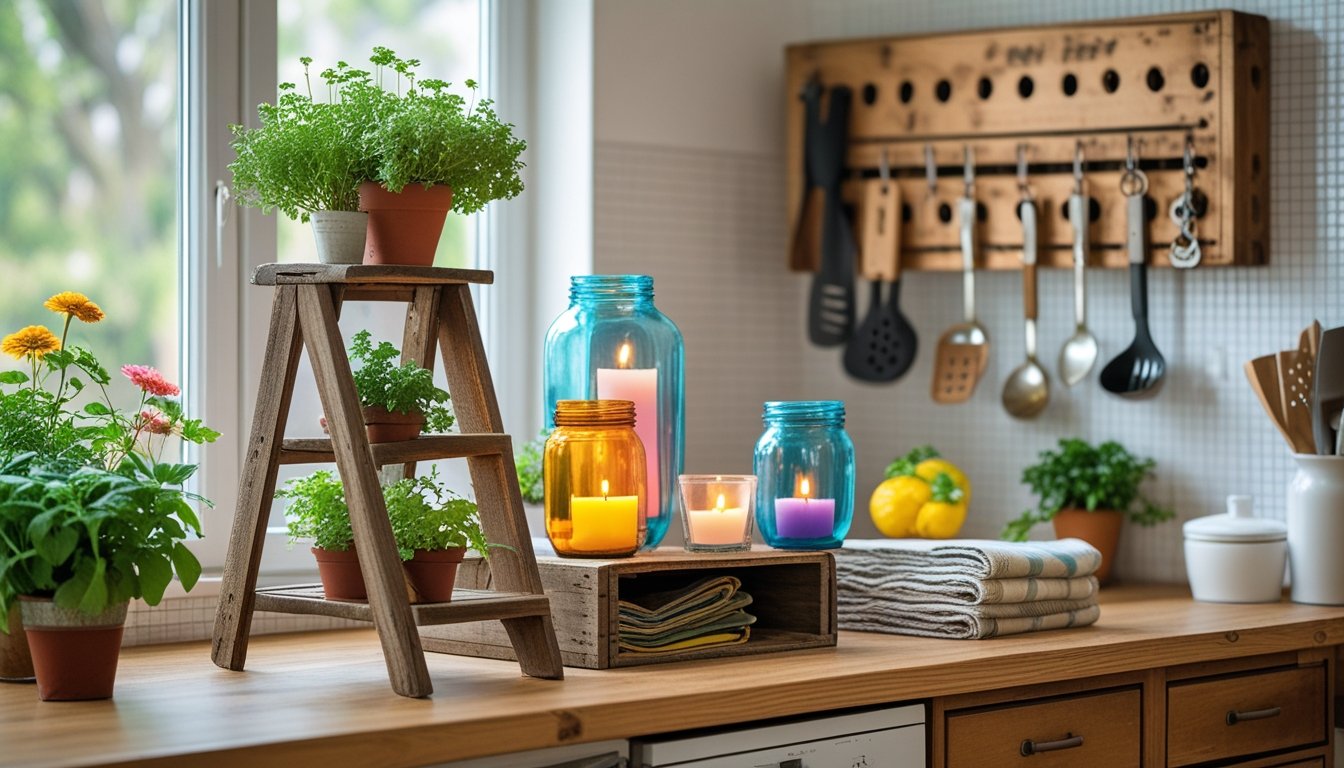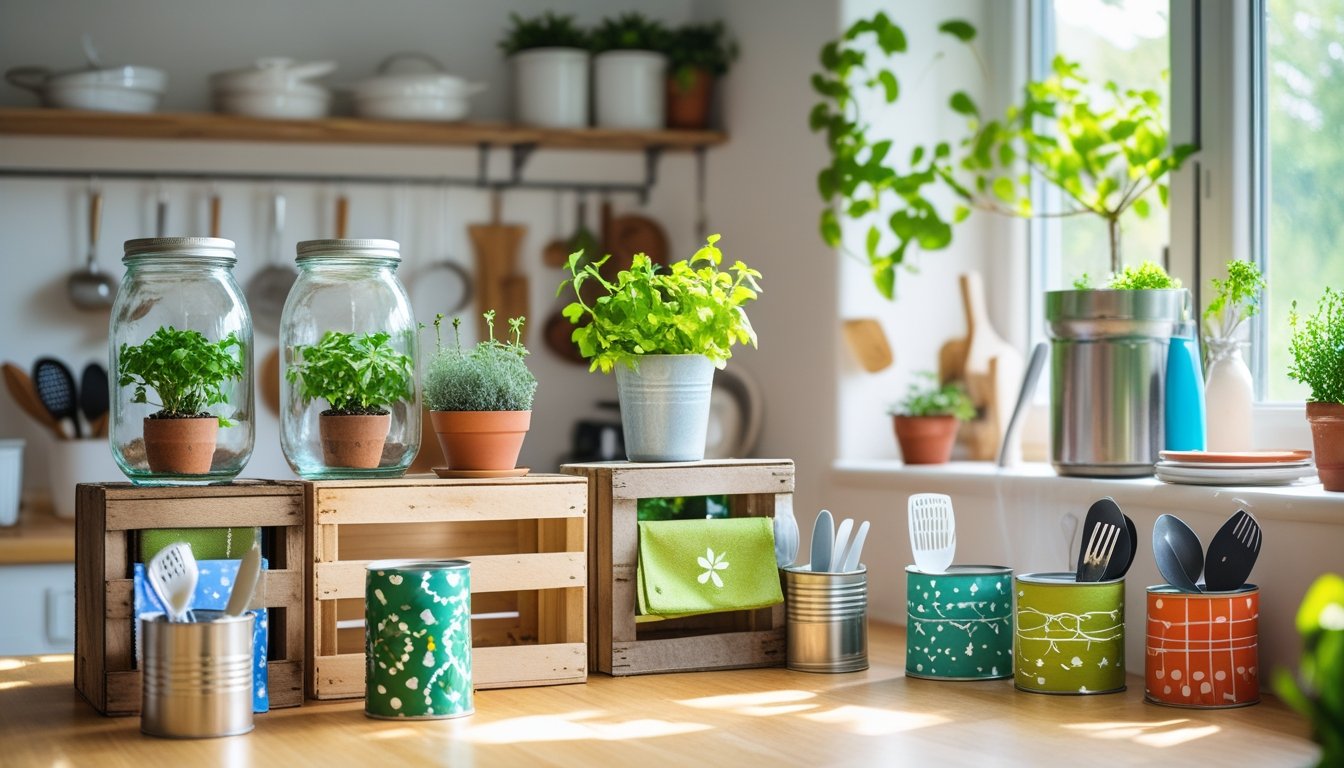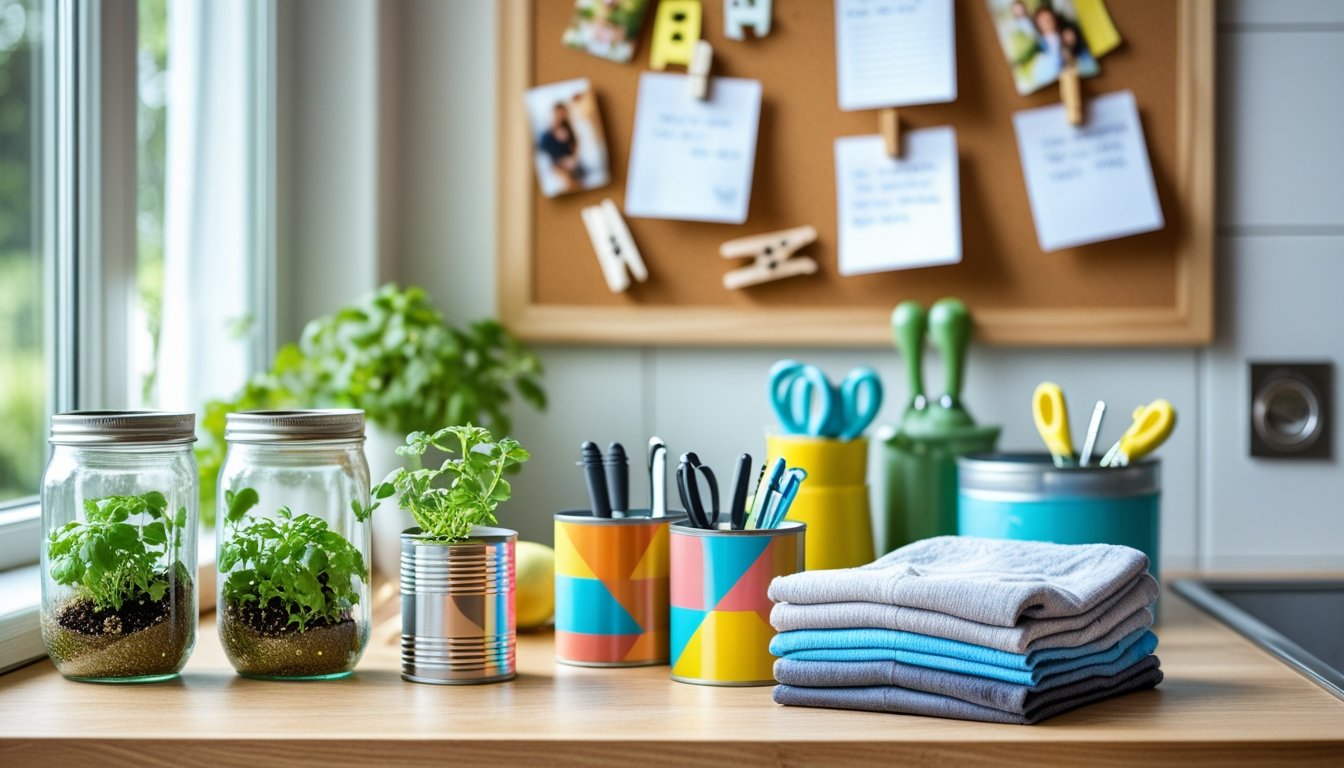Late updated: 21 Jul 2025 14:07
Written by: Daniel Harper
Creative Ways To Repurpose Household Items: Sustainable Solutions for Everyday Life
In our increasingly resource-conscious world, simple creativity can help us lead more sustainable lives. By repurposing household items, we minimise waste and maximise the value from objects we no longer use in their original form. This approach not only saves money but also encourages innovative thinking. With the right mindset, everyday items that might otherwise be discarded can become integral parts of our homes.

Walking through one's home often reveals a myriad of possibilities for creative repurposing. Old milk jugs can transform into planters, while worn-out textiles can find new purpose as cleaning rags. These transformations are emblematic of a sustainable lifestyle, showing us that small changes can make a significant impact. As we explore these unique ideas, we also contribute to reducing our environmental footprint.
The beauty of repurposing lies in its simplicity and versatility, allowing each of us to become creators with the materials we already possess. This practice not only aligns with eco-friendly living but also provides personal satisfaction. Let us delve into the creative world of repurposing and discover how the common can become extraordinary.
Key Takeaways
- Repurposing items saves money and reduces waste.
- Creative reuse can lead to unique home solutions.
- Small changes can enhance sustainability.
Practical and Creative Ways To Repurpose Common Household Items
We have countless household items just waiting to be given new life. By creatively repurposing these, we save money, reduce waste, and contribute to a more eco-friendly lifestyle.
Repurposing Glass Jars and Bottles for Storage and Décor
Glass jars and bottles are incredibly versatile. Mason jars, for example, offer endless possibilities. They make excellent kitchen storage containers for grains, spices, and dry goods. For décor, jars can be painted or filled with fairy lights to create ambient lighting.
Old wine bottles can serve as rustic vases or be transformed into elegant candle holders. By using them creatively, we make practical use of materials that would otherwise be discarded, enhancing both our spaces and our budgets.
Transforming Old T-Shirts, Jeans, and Fabric Scraps
Old clothes can become fresh, new creations. Old T-shirts are perfect for crafting reusable tote bags. Cut them up, sew the edges, and add some handles. Jeans too can be upcycled into durable quilts or cushion covers. Scraps of fabric serve well in patchwork projects or for creating rag rugs.
Using these materials reduces waste and provides an opportunity to make something personalised and unique for our homes. It’s a wonderful way to breathe life into forgotten fabrics.
Upcycling Egg Cartons, Cardboard Tubes, and Paper Rolls
Egg cartons and cardboard tubes are more valuable than they seem at first glance. We can use cardboard tubes from toilet paper and paper towel rolls as planters for starting seeds. Decorated egg cartons double up as paint palettes or storage organisers.
Their use extends to children’s crafts, where they form the foundation for endless creative projects. Upcycling these everyday items cuts down on waste while inspiring resourcefulness and creativity in our households.
Reimagining Plastic Containers, Bottles, and Aluminium Foil
Plastic containers and bottles don’t always have to head straight to the recycling bin. Containers can be used to store leftovers, while plastic bottles can transform into plant pots or bird feeders. Aluminium foil possesses ample household uses beyond cooking, such as covering paint brushes to prevent them from drying out.
With some ingenuity, even the most modest material finds a second purpose, helping us make the most of our resources and limiting environmental impact.
Giving New Life to Old Books and Magazines
Old books hold enormous potential for reclamation. By converting them into unique Christmas ornaments or sculptural pieces, we give them a second chance at life. Magazines can be transformed into rolled-paper coasters or even mosaic art. Their colourful pages offer endless decorative possibilities.
Reusing these materials respects their history while reducing waste—allowing us to enjoy the beauty they bring into our renewed spaces.
Innovative Uses for Household Materials in Crafts and DIY
Everyday items serve as wonderful components in various crafts and DIY projects. Broken ceramics can be used to create intricate mosaic patterns, wine corks make playful plant markers or bulletin boards, while butter wrappers can grease baking pans. These small innovations in how we view and use household items enhance our creativity.
By seeing such potential in everyday materials, we can craft, decorate, and organise with an eco-conscious mindset that helps reduce waste and cultivates a sustainable, cost-effective lifestyle.
Eco-Friendly Repurposing Ideas for a Sustainable Lifestyle

Incorporating eco-friendly practices into our daily routines can make a significant difference. From pet care to outdoor gardening, simple repurposing ideas can reduce waste and promote sustainability. Let us explore some practical and creative methods in these areas.
Sustainable Solutions for Pet Care and Home Organisation
For pet owners, old towels can transform into reusable wipes for pet grooming. Instead of discarding used towels, cut them into smaller pieces for cleaning paws, faces, and more.
Pet beds can be made from old cardboard boxes lined with soft, recycled fabric. This not only provides a cosy spot for pets but also keeps these materials out of landfills.
To organise pet toys, we can repurpose travel-sized product containers or prescription bottles. Label them for easy access and keep playthings organised.
Repurposing for Gardening and Outdoor Spaces
Gardening is an excellent way to repurpose household items. Empty tin cans can serve as bird feeders or even birdhouses with a touch of creativity. Drilling small holes and attaching dowels can create perches for the birds.
Use old prescription bottles as makeshift garden markers. Insert a labelled stick inside with information about planted seeds.
For those keen on composting, cardboard boxes can be a valued resource. They make excellent compost bin liners, gradually breaking down and enriching the soil.
Creative Upcycling for Everyday Needs and Reducing Waste
We can find imaginative ways to repurpose household items for everyday use. Reusing tin cans for storing leftovers helps reduce waste in the kitchen. Simply clean the cans and use them to hold snacks or dry goods.
Old, sturdy jars can replace plastic containers for storing travel-sized products.
Reduce packaging waste by transforming used boxes into eco-friendly storage solutions. Durable boxes can be decorated to match our interiors, making them appealing storage options.
Incorporating these practices into our lifestyle can contribute significantly to a sustainable future. By creatively reimagining the use of everyday items, we minimise waste and promote ecological well-being.
Frequently Asked Questions

Repurposing household items is a creative and sustainable approach that can transform simple objects into functional or decorative pieces. Creativity and resourcefulness play key roles in finding innovative uses for everyday items.
What are some innovative ways to upcycle everyday household items?
We can turn old jars into candle holders or storage containers. Glass bottles may become vases. A spare tyre could serve as a garden planter. Repurposing brings new life to objects we might otherwise discard.
Can you provide some creative ideas for repurposing tin cans?
Tin cans are incredibly versatile. We can paint and decorate them to create rustic lanterns. They can also be used as plant pots or pencil holders. Stringing several together makes an interesting wind chime.
What are the simplest items to repurpose for home decoration?
One of the simplest items includes glass bottles, which can be used as elegant vases with minimal effort. Old frames can be redesigned as shabby-chic wall art. Teacups may find new life as plant containers.
How can I incorporate repurposed items into my home decor to make it unique?
We can combine different materials and textures by using repurposed items like wooden pallets for a rustic coffee table or using vintage metal signs as wall art. Mixing styles adds a unique touch to our homes.
What are some examples of household goods that can be reused in waste management?
Old newspapers can be shredded for compost. Plastic bottles can serve as mini greenhouses. Cardboard boxes are excellent for weed barriers in gardens. These common items are easily incorporated into waste management strategies.
How can I repurpose items in a way that they could be sold for a profit?
By adding value to items, such as customising furniture with paint or re-upholstery, we can create marketable products. Unique design or practicality increases the appeal, making them desirable to buyers seeking one-of-a-kind finds.
